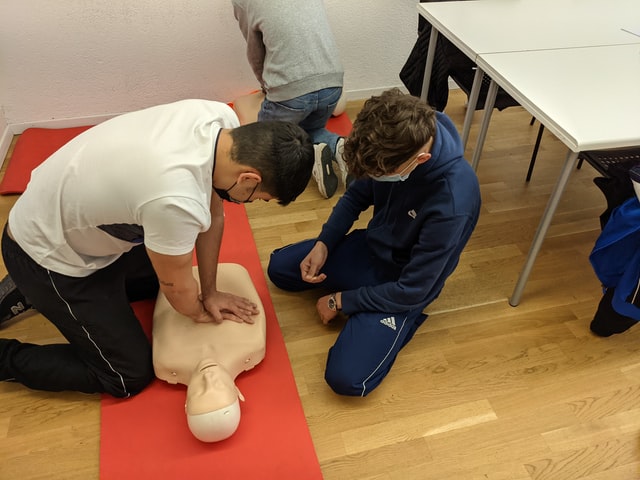Are you prepared to handle a medical emergency in the workplace? With workplace injuries and accidents common, do you know the essential first aid skills that can make all the difference? Join me as we explore the importance of first aid for the workplace and discover the crucial steps you need to take to ensure your colleagues’ safety and well-being in an emergency.
What is first aid for the workplace?
First aid for the workplace refers to the immediate assistance provided to an injured or ill person in a work environment until professional medical help arrives. It involves assessing the situation, identifying potential hazards, and administering basic life-saving measures such as CPR, controlling bleeding, and treating shock.
Adequate first aid can prevent a minor injury from becoming severe and even save lives. In any workplace, it’s important to have designated individuals trained in first aid, accessible first-aid kits, and emergency response plans.
Importance of first aid in the workplace in improving the overall safety culture of a workplace
These are some of the critical reasons why first aid is so essential in the workplace:
- Prompt first-aid treatment can prevent minor injuries from becoming major medical emergencies.
- Increases employee morale: Knowing that the workplace has trained personnel who can provide first aid in an emergency can boost employee morale and confidence.
- Providing first aid can reduce the cost of workplace accidents and injuries by preventing them from escalating into more serious medical issues. It can also help reduce lost productivity and worker’s compensation claims.
Basic first aid skills are essential for any workplace to ensure the safety and well-being of employees.
Here are some skills that can be helpful:
CPR and AED: Cardiopulmonary resuscitation (CPR) and automated external defibrillator (AED) skills can help save the life of a person who has suffered a cardiac arrest.
Wound care: knowing how to clean and dress a wound properly can prevent infections and promote healing.
Burn care: Burns are common in workplaces, and knowing how to treat them can prevent further damage and reduce the risk of infection.
Choking: Learning the Heimlich maneuver can help dislodge an object blocking someone’s airway.
Fainting: Understanding the causes of fainting and how to help someone who has fainted can prevent injury and promote recovery.
Heat and cold-related injuries: knowing how to recognise and treat heat stroke, hypothermia, and frostbite can prevent serious complications.
Allergic reactions: knowing how to recognise and respond to allergic reactions, including anaphylaxis, can be life-saving.
Bleeding: Knowing how to control bleeding can prevent the loss of too much blood and potentially save a life.
Musculoskeletal injuries: understanding how to support and immobilise sprains, strains, and fractures can prevent further damage and reduce pain.
Poisoning: Recognising the signs of poisoning and knowing how to respond can prevent serious harm or even death.
“What essential items should every workplace first aid kit contain to ensure employees’ safety and well-being?”
First aid kit: A comprehensive kit should include bandages, gauze, adhesive tape, antiseptic wipes, tweezers, scissors, gloves, and a CPR mask.
Automated External Defibrillator (AED): An AED can save a life in sudden cardiac arrest and can be used by anyone with minimal training.
Emergency eyewash station: This is important if there is a risk of chemical exposure or other eye injuries.
Burn care supplies: Burn dressings, cooling gel, and blankets can provide relief and help prevent infection in the event of a burn injury.
Splinting materials: These include a variety of splints and wraps to immobilise and stabilise broken bones and sprains.
Having a readily available first aid kit and equipment can mean the difference between a minor injury and a major medical emergency. Ensuring that your workplace is adequately prepared for any potential accidents or injuries is essential.



